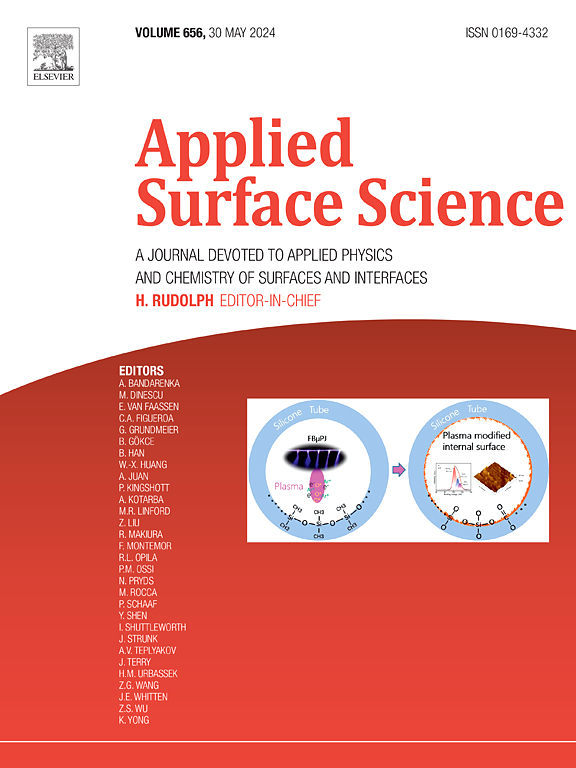Antiviral activity of peptide and peptide mimic coated surfaces
IF 6.3
2区 材料科学
Q2 CHEMISTRY, PHYSICAL
引用次数: 0
Abstract
The persistence of viruses on surfaces and their role in indirect transmission pose significant public health risks, emphasizing the need for antiviral coatings. This study evaluated the antiviral efficacy of cationic peptide Mel4 and anthranilamide peptidomimetic 758, immobilized on glass coverslips using polydopamine (PDA) coatings. Surface analyses by X-ray photoelectron spectroscopy (XPS) and time-of-flight secondary ion mass spectrometry (TOF-SIMS) confirmed peptide and mimic attachment, with characteristic increases in atomic concentrations of C, N, and Br (specific to 758). Tryptophan and arginine fragments were predominant on 758 and Mel4 coatings, respectively. Wettability studies revealed hydrophilic properties for Mel4 and hydrophobic characteristics for 758 coatings. Antiviral assays demonstrated selective efficacy: 758 reduced the infectivity of enveloped viruses, MHV-1 and H1N1, by 68 % and 89 %, respectively, while Mel4 achieved reductions of 85 % and 90 % against non-enveloped viruses HAdV-5 and MNV-1. Durability tests over 74 h showed ∼ 50 % retained efficacy for 758 and > 80 % for Mel4. Minor XPS shifts suggested gradual compound loss or viral residue overlay. Cytotoxicity assays confirmed biocompatibility, with > 90 % host cell viability. These findings highlight the potential of Mel4 and 758 coatings as durable and selective antiviral treatments to mitigate viral transmission on high-contact surfaces.


多肽和多肽模拟物涂层表面的抗病毒活性
病毒在表面上的持续存在及其在间接传播中的作用构成了重大的公共卫生风险,强调了抗病毒涂层的必要性。本研究利用聚多巴胺(PDA)涂层将阳离子肽Mel4和拟蒽酰胺肽758固定在玻璃罩上,评估其抗病毒效果。通过x射线光电子能谱(XPS)和飞行时间二次离子质谱(TOF-SIMS)的表面分析证实了肽和模拟物的附着,具有C、N和Br原子浓度的特征性增加(特定于758)。色氨酸和精氨酸片段分别在758和Mel4涂层上占优势。润湿性研究揭示了Mel4涂层的亲水性和758涂层的疏水性。抗病毒试验显示出选择性效果:758对包膜病毒MHV-1和H1N1的传染性分别降低了68 %和89 %,而Mel4对非包膜病毒HAdV-5和MNV-1的传染性分别降低了85 %和90 %。在74 h以上的耐久性试验中,758和Mel4分别保持了 ~ 50 %和 >; 80 %的效力。微小的XPS变化表明化合物逐渐丢失或病毒残留覆盖。细胞毒性试验证实了生物相容性, >; 90 %的宿主细胞存活率。这些发现强调了Mel4和758涂层作为持久和选择性抗病毒治疗的潜力,以减轻病毒在高接触表面上的传播。
本文章由计算机程序翻译,如有差异,请以英文原文为准。
求助全文
约1分钟内获得全文
求助全文
来源期刊

Applied Surface Science
工程技术-材料科学:膜
CiteScore
12.50
自引率
7.50%
发文量
3393
审稿时长
67 days
期刊介绍:
Applied Surface Science covers topics contributing to a better understanding of surfaces, interfaces, nanostructures and their applications. The journal is concerned with scientific research on the atomic and molecular level of material properties determined with specific surface analytical techniques and/or computational methods, as well as the processing of such structures.
 求助内容:
求助内容: 应助结果提醒方式:
应助结果提醒方式:


